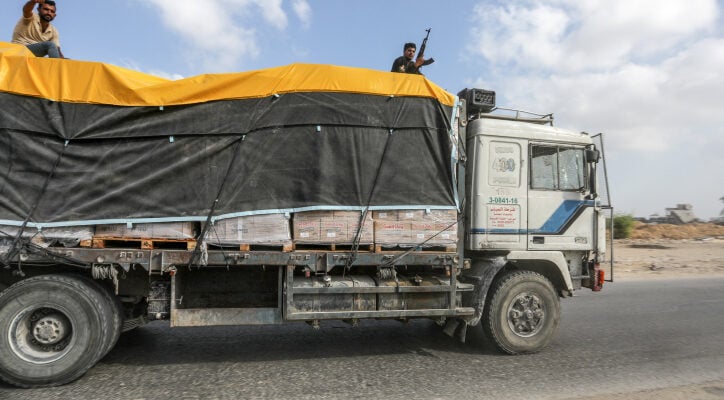Hamas continues to take control of at least 50 percent of all the humanitarian aid that enters Gaza.
By Anna Epshtein, TPS
As Israeli forces continue pressing a new offensive against Hamas in Jabaliya, experts said the fighting was the only way to ensure Hamas does not re-establish itself in northern Gaza.
While soldiers also returned to the nearby towns of Beit Hanoun and Beit Lahiya, the bulk of the fighting appeared to be taking place in Jabaliya.
Analysts told The Press Service of Israel that the terror group continues seizing humanitarian aid intended for the Gaza residents, using it for its own needs and selling the remains to civilians at high prices.
‘There were reports about a month ago that Hamas has earned as much as $500,000 by selling the humanitarian aid it looted from the international organizations. With this money, it pays salaries to its remaining members and manages to mobilize new ones,’ Professor Kobi Michael, a senior researcher at Tel Aviv University’s Institute for National Security Studies and a senior fellow at the Misgav Institute for National Security, told TPS-IL.
According to Michael, Hamas continues to take control of at least 50 percent of all the humanitarian aid that enters Gaza.
“The trucks with humanitarian aid are inspected by Israel before they enter the Gaza Strip. Once they are on the other side of the fence, they are supposed to be taken over by international organizations that distribute the aid. But these organizations are not able to manage the enormous amount of aid that is being sent to Gaza,” Michael explained.
“Lots of trucks are being looted by Hamas even before they get into the hands of humanitarian organizations. The army recorded a conversation of two Hamas operatives in which they were complaining their warehouses are so full they don’t have where to store the aid – this is the extent of the problem,” he said.
TPS-IL reported previously that despite Gaza’s widespread devastation, Hamas continues paying salaries to its gunmen and civil servants – partly through taxing and diverting humanitarian aid and distributing food vouchers — with the help of clans, criminal groups and so-called “People’s Committees.”
“It’s a strategic failure of the IDF that it refused to take control over the aid distribution, and the strategic failure of the international community which insists on delivering humanitarian aid to zones of the Strip where the IDF had ordered the civilians to evacuate,’ says Gabi Siboni, a colonel in the IDF reserve service and a senior research fellow at the Misgav Institute for National Security.
When Hamas slashed food prices in April, Gaza residents told TPS-IL that the problem wasn’t a lack of food but a shortage of money for families to purchase it.
According to Siboni, humanitarian aid should not at all be heading towards the north of the Strip, where the IDF ordered the civilians to evacuate to the south.
Said Michael, ‘The IDF should handle the distribution of humanitarian aid in Gaza from the border to the distribution centers inside the Strip, and international organizations could handle it from there. Each time the army leaves the area, Hamas manages to regroup. I think the IDF has learned the lesson, and it won’t happen again.”
At least 1,200 people were killed, and 252 Israelis and foreigners were taken hostage in Hamas’s attacks on Israeli communities near the Gaza border on October 7. Of the 97 remaining hostages, more than 30 have been declared dead.
Hamas has also been holding captive two Israeli civilians since 2014 and 2015, and the bodies of two soldiers killed in 2014.





